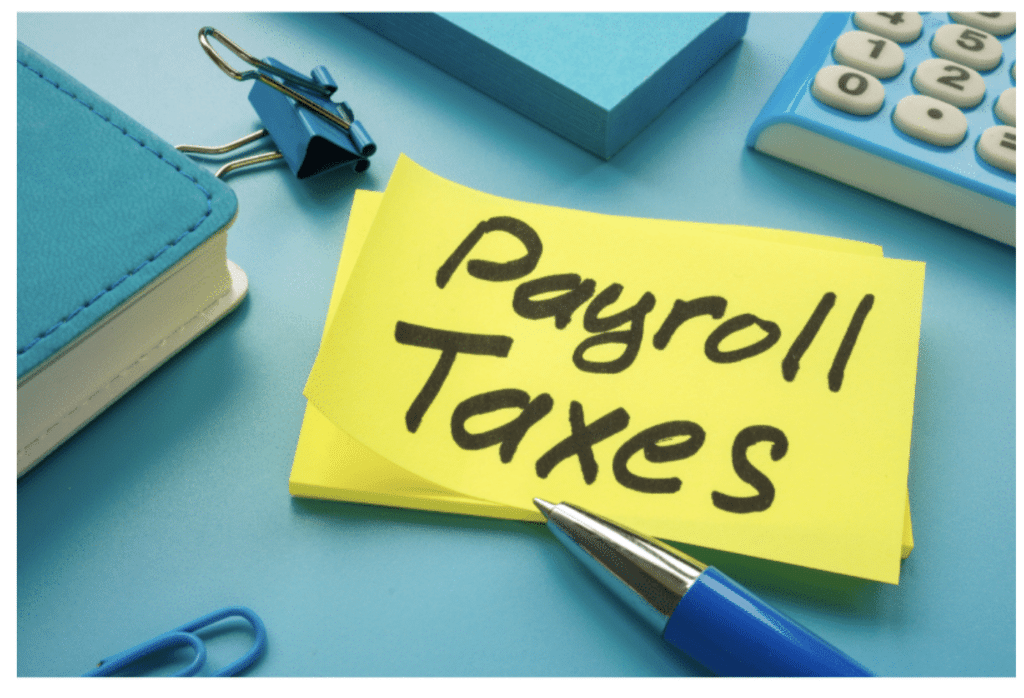Navigating the complexities of payroll tax for medical practices: HotDoc’s in-depth guide
Blog Guide
Navigating the complexities of payroll tax for medical practices: HotDoc's in-depth guide
At HotDoc, our commitment is to empower you with simple, clear, and accurate information to help you navigate the complexities of running a healthcare practice. We understand the challenges you face in providing quality patient care while managing efficiency and costs.
In this blog, we’ll delve into a pressing concern for Australian healthcare practices: payroll tax. We’ll break it down in a friendly and informative way, supported by our expert panel Sarah Bartholomeusz Founder & Principal of You Legal and Kelly Chard Founder of specialist medical accounting firm GrowthMD, ensuring you have all the tools to make informed decisions.

Exploring legal insights: in-depth discussion by Sarah Bartholomeusz
Implications for medical centres
The law in relation to employees and contractors has, for many years, been extremely complex. Medical practice owners have long been navigating issues that can arise including whether superannuation or leave is payable to doctors who engage with their practice.
Thomas and Naaz Pty Ltd v Chief Commissioner of State Revenue [2023] NSWCA 40 (‘Thomas and Naaz’) is a case that has raised a tax issue that many practices had not previously considered. Following this case, medical practices that engage doctors are now considering whether they are at risk of a substantial retrospective payroll tax bill and ongoing obligations to pay payroll tax.
The main commentary around Thomas and Naaz is about the doctors that were captured by the ‘relevant contract’ provisions of the Payroll Tax Act 2007 (NSW) (‘the Act’). The Tribunal said, for various reasons, that the way the doctors were engaged more closely resembled an employee-employer relationship, as opposed to a tenant or contractor relationship, and this determination was grounds for an $800,000 retrospective payroll tax bill.
Key issues: engaging with doctors
Practice owners now have the opportunity to review their arrangements with doctors to ensure that their
agreements, processes, and procedures accurately document the underlying relationship.
Practices are considering whether they engage with doctors in one of three ways
☑️ As employees
☑️ As independent contractors or
☑️ As business owners operating their own business from the premises of the practices
What is right for a practice depends on several different factors.
Understanding the legal framework
Navigating the legal framework in Australia when considering how doctors are engaged is complex, and we do not recommend that practice owners attempt to do it alone.
Whether someone is categorised as an employee, independent contractor or a genuinely independent business owner is governed by federal laws, state laws, and common law. Payroll tax in Australia is a state and territory-based tax, which is largely harmonised, however different State Revenue Offices have announced different approaches following the Thomas and Naaz decision.
A snapshot of Australian payroll tax rates
To get a clearer picture of the payroll tax landscape, let’s take a look at the indicative table of payroll tax
rates across Australian states and territories
State or Territory | Threshold | Rate | Recent Ruling | Amnesty |
ACT | $2,000,000 | 6.85% | The ACT government announced a two-year payroll tax exemption until 30 June 2025 for practices that bulk bill 65% of their patients | |
Queensland | $1,300,000 | 4.75% (4.75% on salary and wages $6,500,000 or less then 4.95% thereafter. Regional employers may be entitled to a 1% discount on the rate until 30 June 2030) | Queensland offered a temporary payroll tax amnesty on payments made to tenanted GPs until 30 June 2025. Practices in Queensland have until the recently extended deadline of 10 November 2023 to lodge their expressions of interest for the amnesty and then have until 30 June 2025 to lodge their application | |
New South Wales | $1,200,000 | 5.45% | Ruling was issued and in August 2023 announced a suspension of payroll tax audits | |
Victoria | $700,000 | 4.85% (1.2125% for regional employers) | ||
Tasmania | $1,250,000 | 4.00% (4% between $1,250,001 and $2,000,000 then 6.1% thereafter) | TBC | |
South Australia | $1,500,000 | 4.95% (Variable rates between 0% to 4.95% between $1,500,000 and $1,700,000, then 4.95% thereafter) | The SA Government has introduced a temporary payroll tax amnesty that will be in effect until 30 June 2024. To be eligible for the amnesty practices must register their expressions of interest by September 30 2023. This means that medical practices in South Australia have a specified period during which they can benefit from this amnesty | |
Western Australia | $1,000,000 | 5.50 – 6.50% | WA Govt have said they are not pursuing medical practices at this stage | |
Northern Territory | $1,500,000 | 5.50% | TBC |
These are the current rates and thresholds, and comments on the current Rulings and Amnesties. It may be necessary to review historical information including the rates and threshold with your advisors, especially if you are considering whether there is a risk of payroll tax being applied to your entity.
What’s next?
Proactive planning for payroll tax:
Kelly Chard expert advice and step-by-step guidance
Step 1: Know where you stand
By understanding the level of risk and the dollar value of the potential liability, you can make an informed decision on how business-critical obtaining immediate advice and acting is to your business.
✅ Familiarise yourself with your state’s threshold and tax rate – this is your starting point.
✅ Consider whether your arrangements with practitioners are likely to be considered relevant contracts according to state rulings.
✅ Calculate the value of payments to practitioners that might be subject to taxation. This is usually limited to the 65% or 70% of practitioner billings that have been remitted to the practitioner. Identify any practitioners who may qualify under one of the payroll tax exemptions, such as working less than 90 days per year or offering services to the public in general.
✅ Assess the potential annual payroll tax liability and how it might impact your business.
✅ Evaluate the risk of audit or investigation in your state and potential penalties.
Step 2: Explore concessions and amnesties
Each Australian state has its own approach to payroll tax concessions and amnesties. Here’s what
you need to do:
❇️ Research your state’s specific concessions and amnesties – understanding your options is crucial.
❇️ Be mindful of participation deadlines.
❇️ Consider the details and reporting obligations under the amnesties, weighing the risks and benefits before making a decision.
❇️ Seek guidance from an experienced accountant or lawyer.
Step 3: Plan for the future
Forward-thinking healthcare businesses should consider how payroll tax will affect them beyond the
concession or amnesty periods. Here’s how to do it:
Explore business models in which payroll tax does not apply to practitioners. This could include a true service entity model where the health practice is strictly providing rooms and support services and doctors are tenants.
Consider reorganising business operations to clarify that practitioners are independent businesses. You may consider reviewing services offered, public messaging, and ensuring banking is direct to the practitioner.
In some cases, paying payroll tax may be inevitable. Some practices have shared resources and funding arrangements, have complimentary product sales lines or services, are involved in grant programs, or employ practitioners or traditional contractors. While nobody likes the idea of paying more tax, for healthcare businesses with a fantastic and profitable business model, making changes to avoid payroll tax is likely to be counterproductive.
Weigh the cost of paying the payroll tax against more extensive operational changes.
Hot tip: Collaborate with an accountant and legal advisor to explore these options effectively.
Step 4: Take action
After assessing your payroll tax risk and developing a plan, it’s time to take action. Here are some actionable steps:
❇️ Familiarise yourself with your state’s revenue office rulings.
❇️ Schedule a meeting with your accountant to discuss your risk profile and participation in amnesties, especially if you’re in SA or QLD.
❇️ Review and update legal and practitioner agreements to ensure alignment with your business model
❇️ Evaluate whether changes are needed to direct patient payments to practitioners’ own business accounts.
❇️ Ensure your online and public presence aligns with your business model.
❇️ Optimise your software and tools, such as HotDoc, to match your business model and financial flows.
Hot tip: HotDoc’s Direct to Practitioner Payout feature could assist by paying your doctors directly. Alongside this, consider consulting an accountant to assess your needs.
Conclusion
Navigating payroll tax in the Australian healthcare industry can be challenging, but at HotDoc, we’re here to guide you every step of the way. By understanding the legal framework, staying informed about state-specific rulings, and carefully evaluating your practice’s engagement model, you can proactively manage payroll tax issues. HotDoc is your partner in building a thriving medical practice, and we’re committed to providing you with the knowledge and tools you need to succeed.
For more information, join us at our first webinar on Tuesday 26th September at 11:30 am AEST. We’d love to have you there! 😊
Related customer stories
HotDoc is trusted by tens of thousands of GPs, specialists and dentists. Here’s what a few of them say.

How Whole Medicine Increased Bookings for Preventative Health Checks During COVID-19


